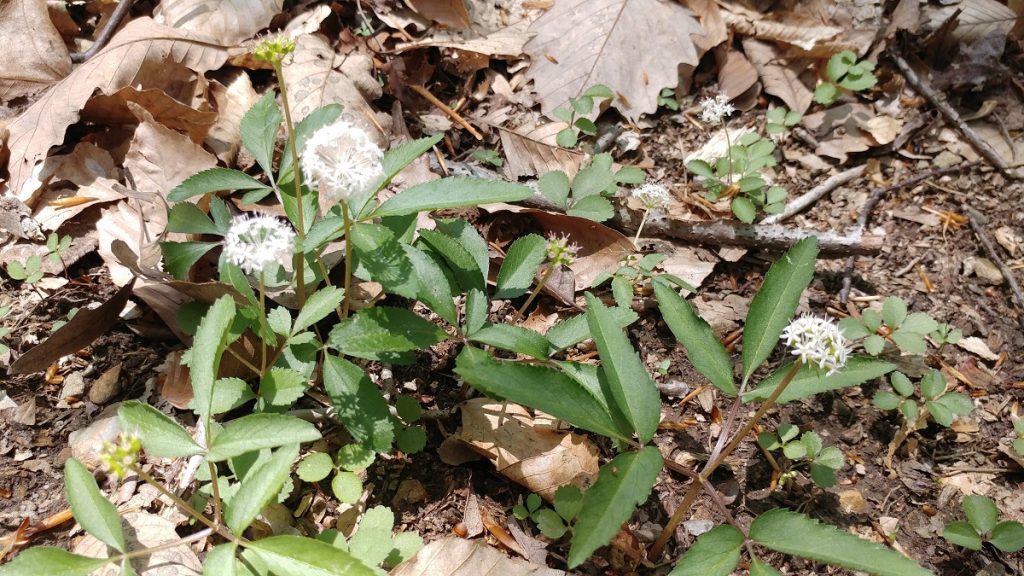
While American ginseng finds itself endangered in the wild from commercial exploitation and overharvesting, it’s smaller cousin dwarf ginseng (Panax trifolius) remains locally abundant, under-utilized, and less than understood. Dwarf ginseng is most abundant in the north, especially in Pennsylvania, the northeastern New England states, southern Canada, and Michigan and Wisconsin. It’s native range extends further south, down the spine of the Appalachian mountains into some parts of the southeast.
Old-timers called dwarf ginseng “groundnut,” but it is not to be confused with Apios americana, which also shares in that name. It was called groundnut for the flavor of its root… crisp, sweet, and nutty, with just a hint of that distinctive medicinal flavor character of ginseng family plants. The ginseng family, Araliaceae, is kin to the carrot family Apiaceae, and together they contain some of the world’s best edible and medicinal root plants.
Both the Apiaceae and Araliaceae family member plants have flowers shaped like umbels, spreading equidistant from a common point like the ribs of an umbrella. Whereas Apiaceae umbels are generally flat-topped (picture the flowers of parsley), Araliaceae umbels are typically globe-shaped.
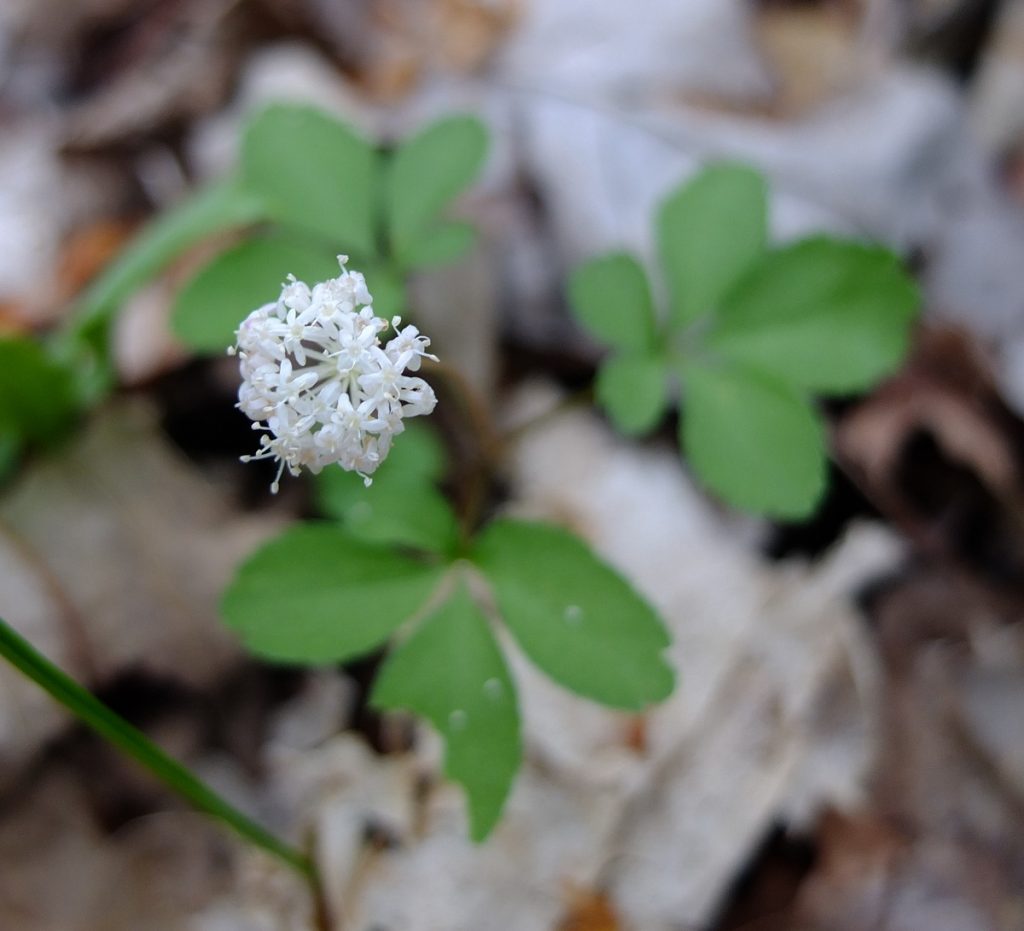
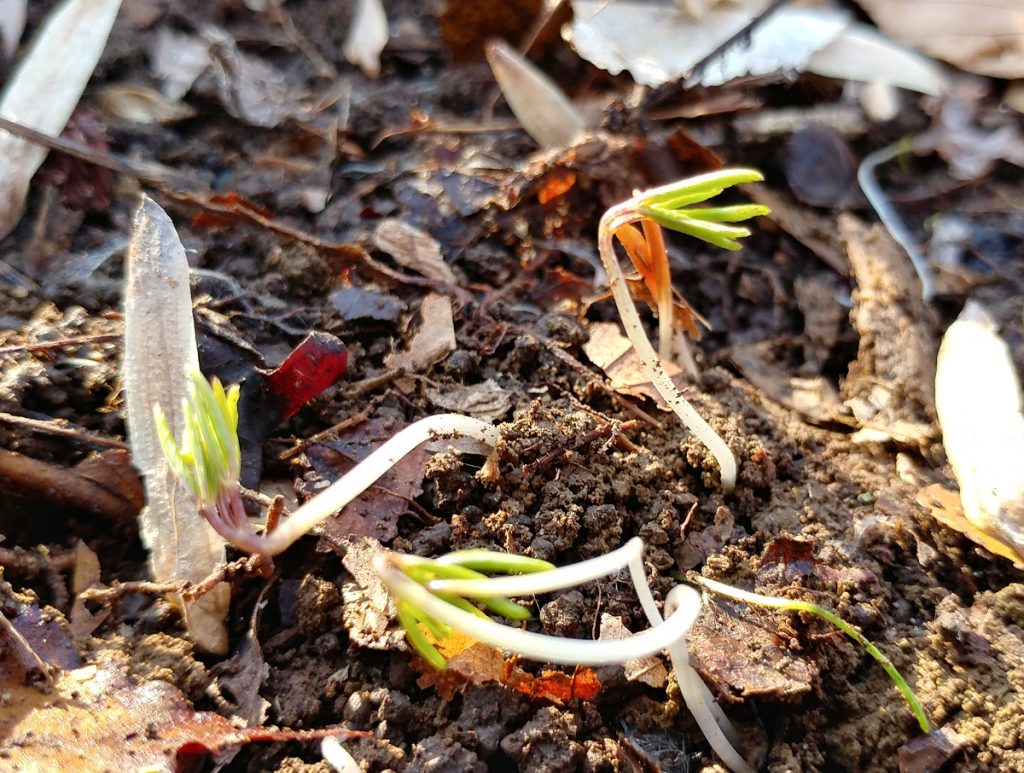
Dwarf ginseng is a true spring ephemeral, existing only for a short period of time in the spring lasting around two months total before disappearing above the ground entirely for the remaining ten months out of the year. As the ground begins to consistently warm following the winter, the dwarf ginseng first emerges, and casts its tiny delicate white umbel flowers a week later, barely inches above the litter of leaves.
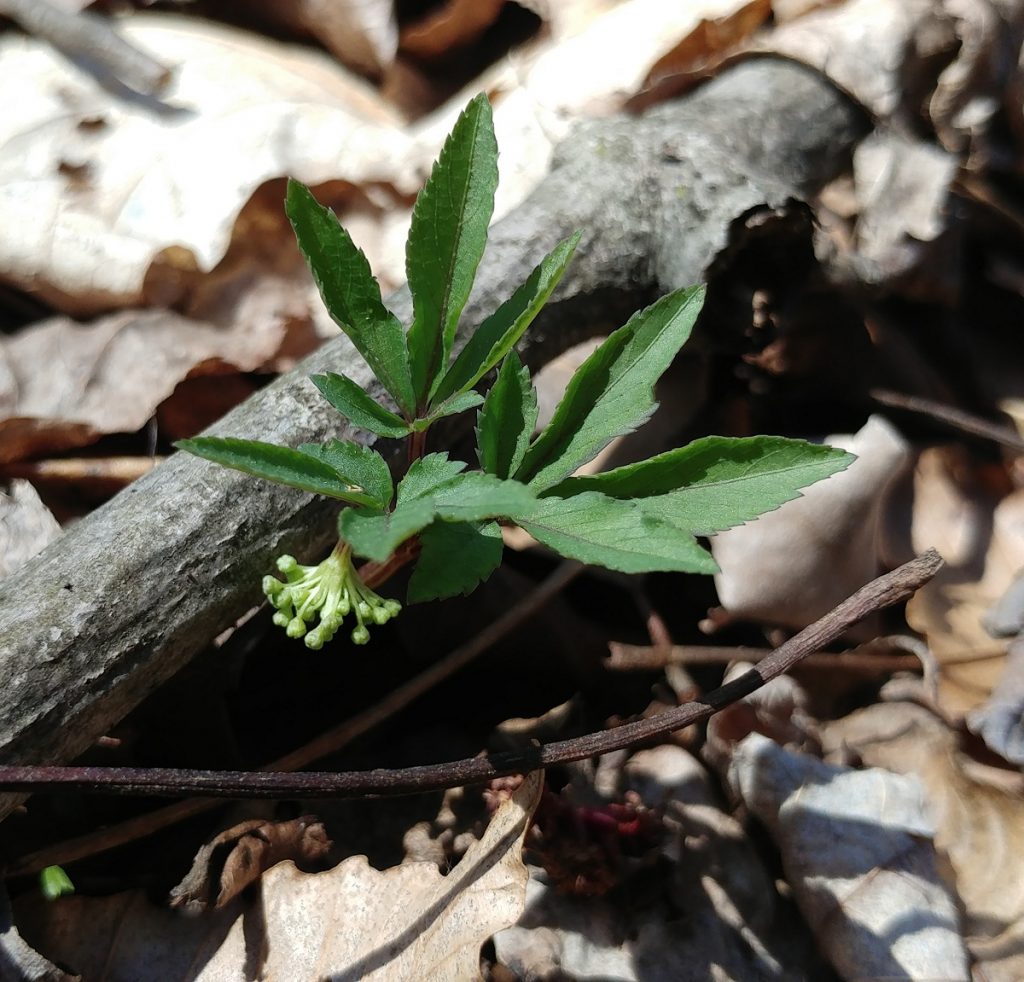
The root of dwarf ginseng is small and round, often about three or four inches deep in the ground and between a quarter and a half inch in diameter, seldom larger.
The botanical name trifolius refers to dwarf ginseng’s set of three leaves arranged opposite each other in the shape of a triangle. Individual dwarf ginseng leaves are palmate and made up of either three or five lobes. Dwarf ginseng is a short plant no more than four or five inches in height above the ground.
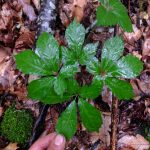
American ginseng (Panax quinquefolius) by contrast can have four, five, six, or more sets of leaves around the central stem. Just like the points on the antlers of a deer, old American ginseng plants with many sets of leaves inspire the sang-hunter’s jargon “pronger,” as in “four-pronger!” American ginseng is also a much larger plant than its dwarf cousin, sometimes being over two feet tall. They are very easy to distinguish.
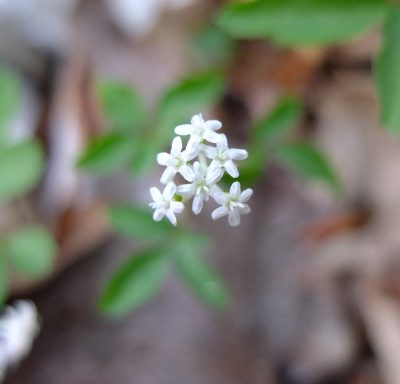
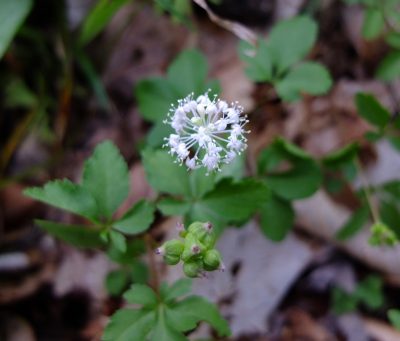
Dwarf ginseng remains in flower for a few weeks. Following pollination it sets seed, and in another two or three weeks the seed ripens and falls to the ground in tandem with the yellowing of the leaves leading up to summer dormancy. Seed collection time varies depending on latitude and climate, but is 6-8 weeks after the plants first emerge. This year in 2018 we had a long winter and a late spring, and the dwarf ginseng seed is only now ripening in the middle of May and will be available until early June. Most years the plants are gone by early May.
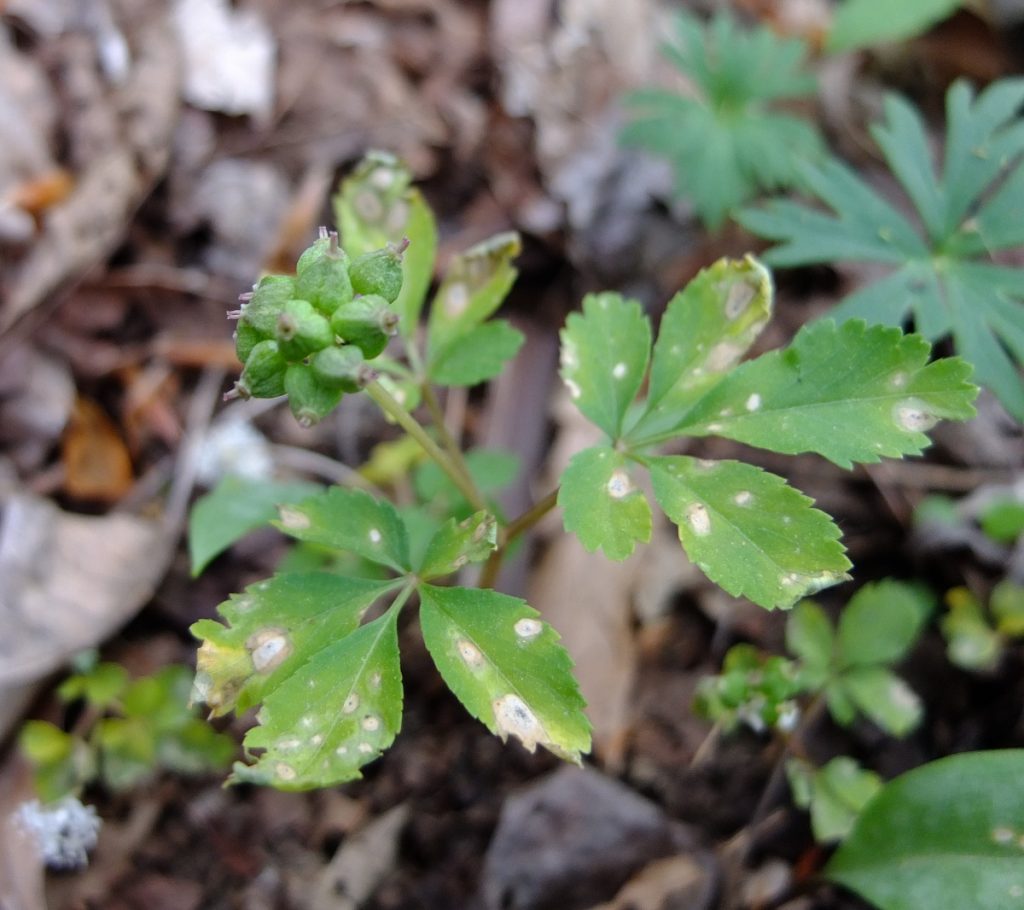
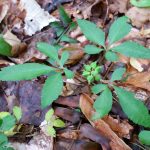
Unlike American ginseng fruits which ripen to red berries with a hard seed inside, the fruit of dwarf ginseng remains soft and green when ripe, or yellow-green at best. Viability is destroyed if the seed dries out, therefore it should be sown right away or stored in moist conditions. After the seeds have ripened they fall off the plant onto the ground below. Or sometimes the leaves of the plant wither away first, allowing the seeds to descend slowly to the ground.
Dwarf ginseng may form dense colonies in ideal conditions. I have witnessed it forming a solid groundcover over dozens of square feet. The ideal conditions for dwarf ginseng seems to be low-lying moist areas alongside forested creeks and springs. Dwarf ginseng is also found more sparsely downslope of hills, mountain coves and hollows.
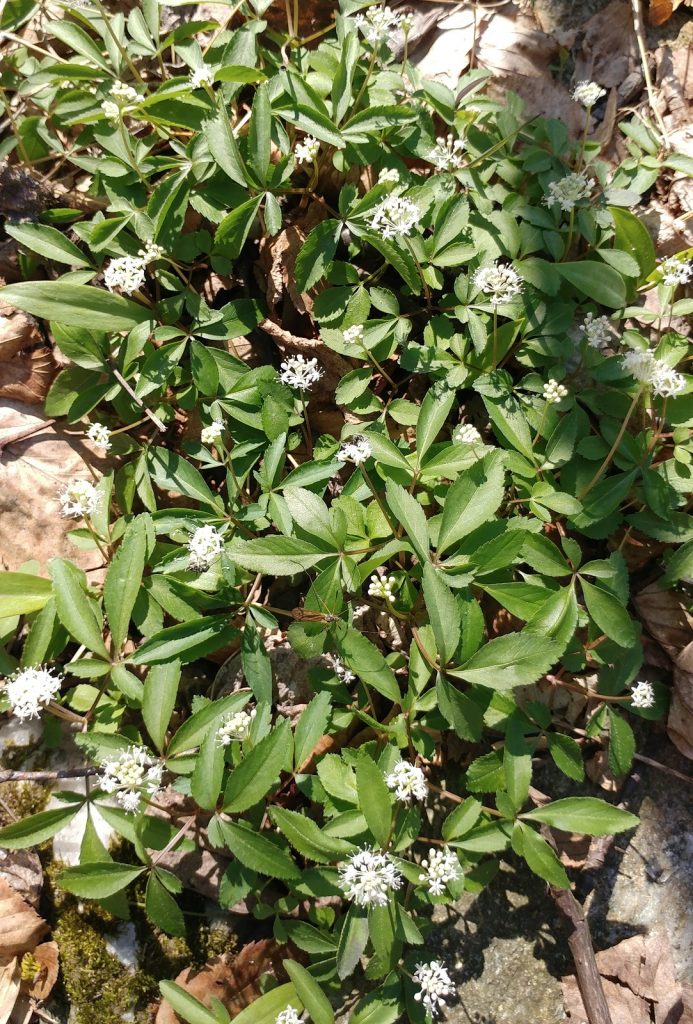
The roots of dwarf ginseng ought to be harvested for food only when the seed is ripe. This way, by leaving behind the ripened seeds in situ to germinate the following spring, harvest practices may be regenerative. Tending to colonies in such a way ensures not only future harvests but increased abundance of dwarf ginseng over time. The action of root digging is tillage, providing aeration to the soil and optimal conditions for seed germination.
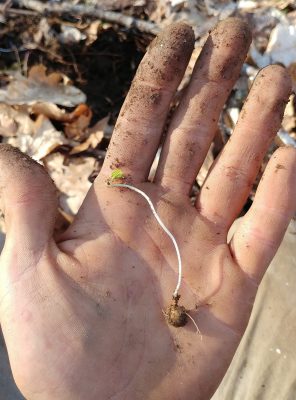
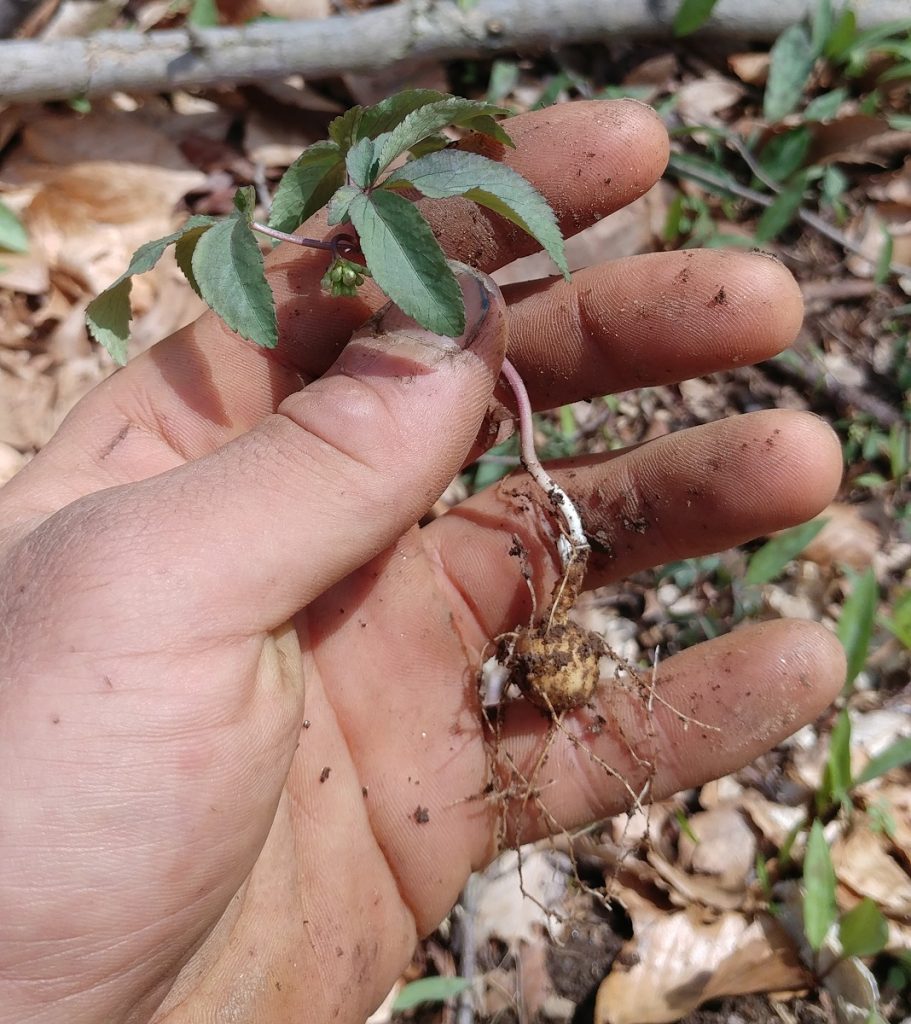
Dwarf ginseng transplants very poorly, with a success rate of less than 20%. Therefore growing from seed is definitely the best way to propagate these beautiful little plants. Seed germinate in the spring following a winter, i.e. they need cold-moist stratification. I don’t know how many years until seedlings first flower, but if they are like other perennial Apiales it should be on the order of 3 or 4 years.
Now for the medicinal aspects of Dwarf Ginseng…
The primary active constituents of ginseng (Panax spp.) plants are a family of saponins in the dammarane family called ginsenosides. Dammaranes form a four-ring steroid-like chemical structure. Ginsenosides result in a wide variety of effects on the cardiovascular, immunological, endocrine, and central nervous systems. Ginsenosides are also considered to have anti-oxidant, anti-inflammatory, anti-viral, anti-cancer, anti-depressant, and stimulant effects. Ginseng is part of a category of medicines called adaptogens, because they help the body adapt and overcome stressors both physical and psychological.
To understand in more depth the way ginsenosides work, check out “Role of ginsenosides, the main active components of Panax ginseng, in inflammatory responses and diseases. (Journal of Ginseng Research, Volume 41, Issue 4. October 2017, Pages 435-443).” I’ll keep moving forward, to highlight the medicinal potential of dwarf ginseng.
Roots vs. Leaves?
Ginsenosides found in American ginseng (Panax quinquefolius) make up about 3% of the weight of the root and include Rg1, Re, Rb1, Rc, Rb2, and Rd, with Re, Rb1, and Rd making up the bulk. Interestingly, ginsenosides make up around 4.14-5.58% of the total weight of the leaves of the ginseng plant, with Rd, Re, and Rb2 making up the bulk. (Ginsenosides in Roots and Leaves of American Ginseng. Li, Mazza, Cottrell, and Gao, 1996 [.pdf])
In the case of Korean ginseng, Panax ginseng, findings were more dramatic, suggesting that P. ginseng contains up to 12 times more ginsenosides in the leaves than in the roots. The leaves had high amounts of ginsenosides Rb3 and Rh1, but the main root contained large amounts of ginsenosides Rb1 and Rc. (Comparison of Ginsenoside Contents in Different Parts of Korean Ginseng. Kang & Kim, 2016 [.pdf])
In conclusion, for herbalists using ginseng for medicine, consider preparations of both the roots and leaves.
In the case of dwarf ginseng (Panax trifolius), Lee & Marderosian found that the total percentage of ginsenosides in the root was only 0.0061%, a far cry from the ginsenoside content of P. quinquefolius or P. ginseng. (The ginsenosides found were R0, Rb1, Rb2, Rc, Re, Rf, and Rg2.) (Two-dimensional TLC analysis of ginsenosides from root of dwarf ginseng. Lee & Marderosian, 1981 [.pdf]) These findings would suggest that dwarf ginseng is not a useful adaptogenic medicine. However…
Lee & Marderosian did another study a few years later on the aerial portions of dwarf ginseng, and found the crude glycoside content to be 8.84%, composed of two flavonoids and four saponin ginsenosides Rd4, Rc5, Rb3, and notoginsenoside-Fe. (Studies on the Constituents of Dwarf Ginseng. Lee & Marderosian, 1988 [.pdf])
These results are consistent with the other findings with American ginseng and Korean ginseng showing higher ginsenoside content in ginseng leaves rather than roots, and ultimately suggest that Dwarf ginseng could also be useful as adaptogenic medicine if it is the aerial portions of the plant which are used.
I eat the leaves of dwarf ginseng in the early spring as an herbal tonic and pungent salad green, and I eat the roots of dwarf ginseng as a sweet-tasting starchy staple root in the late spring. I am curious to experience the tinctured leaves of dwarf ginseng. Any herbalists out there who have made such a potion, please get in touch!
This stuff can occasionally be found in the piedmont area leading away from the Appalachians but it gets rarer as you move toward the coast. I’ve only seen it once or twice.
We have some well established, albeit small, patches of P. trifolius in the DC/Maryland area. I am making a tincture now, should be ready in a couple of weeks, but have been nibbling the leaves and making tea of the leaves lately. Such a great flavor. Thanks for the good info!
Is there any way to get seeds of dwarf ginseng for research purposes?